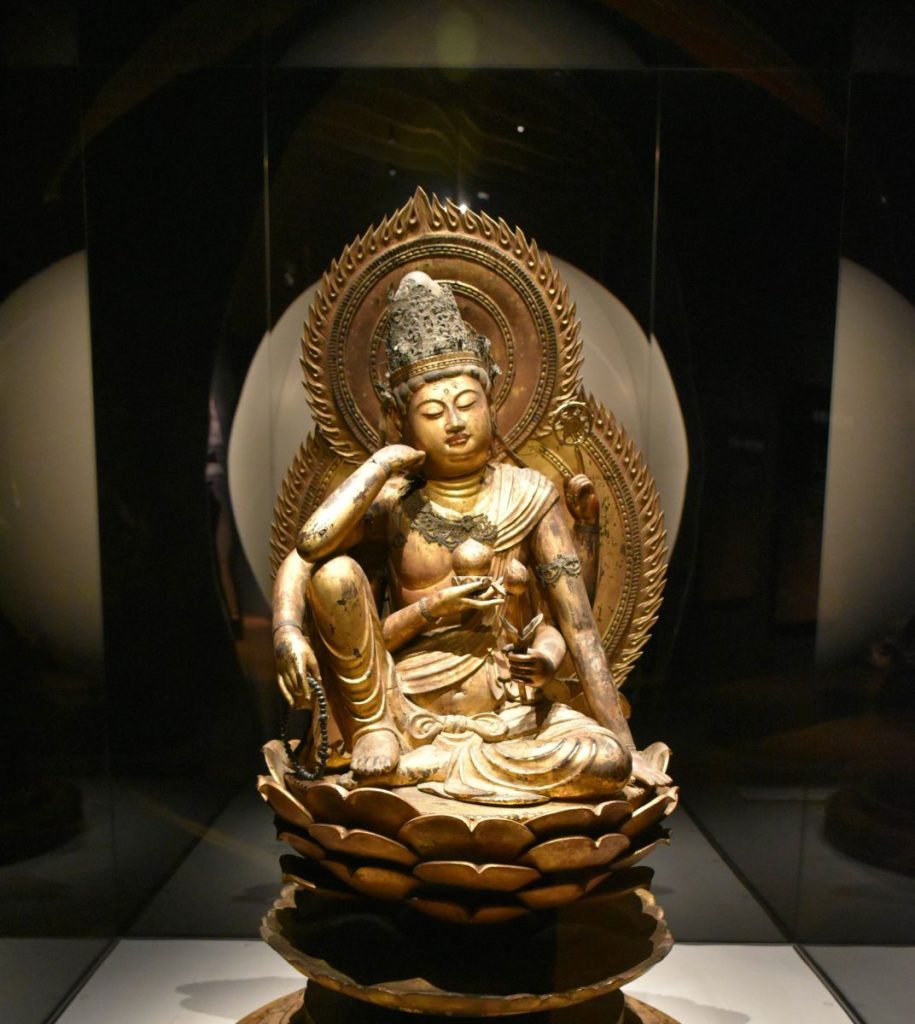


In his many hands, Kannon carries traditional Buddhist symbols to ward off evil and break the cycle of suffering, this sculpture being equipped with two staffs, a vajra, a lasso, a lotus bud, a ring and a bell.
Kannon buddha japanese kami full#
Given the practical difficulty of making a sculpture with a thousand arms, literally thousand-armed examples are fabulously rare, and Senju Kannon is more commonly rendered with a more practical number that signify the full thousand, this sculpture possessing a total of 34 arms. This Edo period zushi (portable shrine) sculpture of Senju Kannon bears a beaded crown, representing a simplified depiction of the eleven heads bestowed by Amida Buddha, and wears a tranquil expression of calm, ready to embrace those in suffering. From the 8th century onwards, Senju Kannon was worshipped as an independent deity, particularly by those seeking relief from illness and pain. once again, Amida comes to his rescue, and gives Kannon one thousand arms with which to alleviate the suffering of the earthly realm. Now better able to hear the cries of the sentient beings, Kannon tries to reach out to the wretched multitude, but finds that his two arms are overwhelmed, and they shatter into pieces. Amida Buddha, who is served by Kannon, sees his plight and bestows him with eleven heads with which to hear the suffering of humans. In a state of great distress at this quandary, his head suddenly ruptures into eleven pieces. sāra, the cycle of suffering but despite his valiant efforts, he realises that there are countless souls to be saved. In a well-known Buddhist folk story, Kannon vows not to rest until he has freed all those in Sam.

Kannon has come to be depicted in many forms in Japan, the most senior and important, and one of the most beloved Esoteric manifestations being Senju Kannon, or Kannon with a Thousand Arms. Veneration of Kannon began in Japan soon after the arrival of Buddhism in the 6th century, where the name was taken from the earlier Chinese translation (Guanyin), literally meaning the one who ‘looks upon cries’ – the witness of suffering, who comes to the aid of those who pray for salvation. In early Buddhist texts, such as the Lotus Sutra, entire chapters are devoted to this most tireless of deities, making Kannon hugely popular in India and across Asia. Kannon (Sanskrit: Avalokiteśvara) is the bodhisattva of compassion, who comes to help those in need and distress in the human world. Mid 17th to early–mid 19th century, Edo period (1603–1868).


 0 kommentar(er)
0 kommentar(er)
